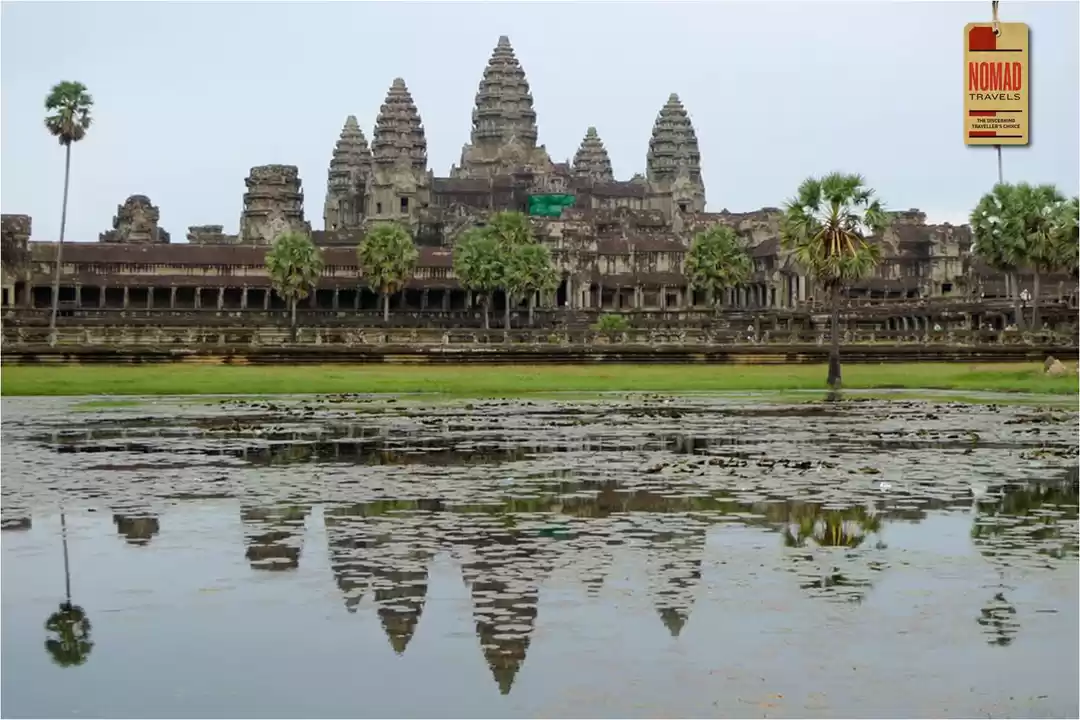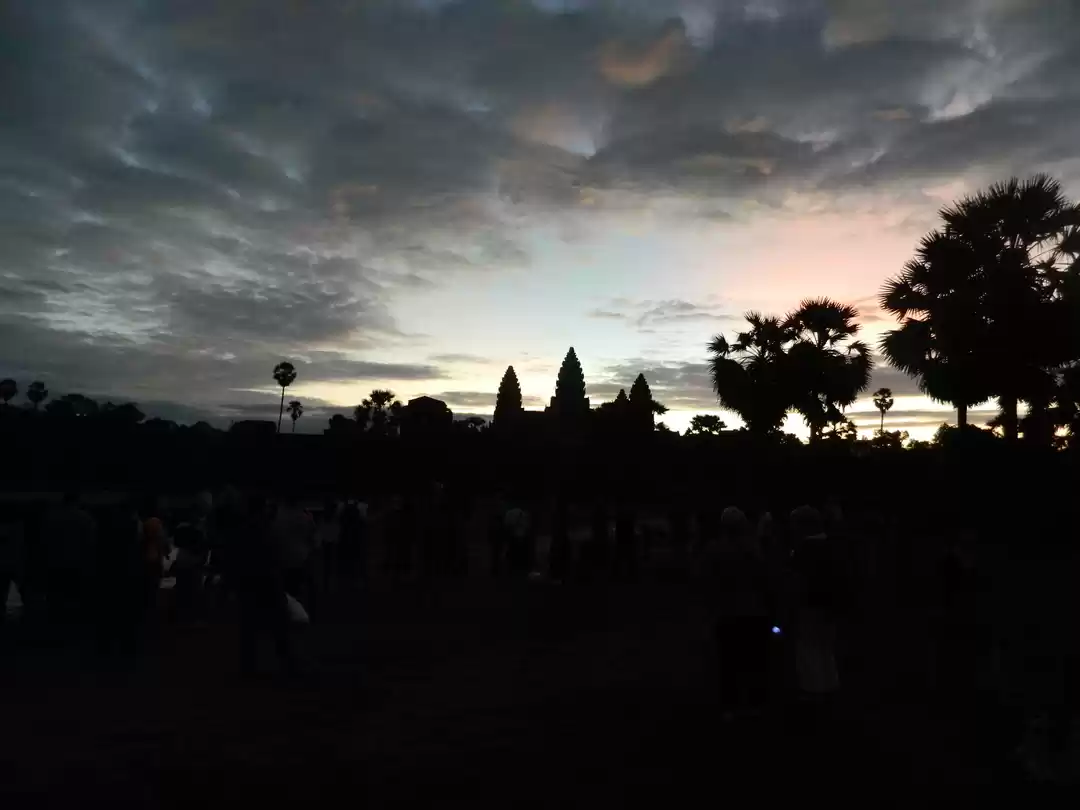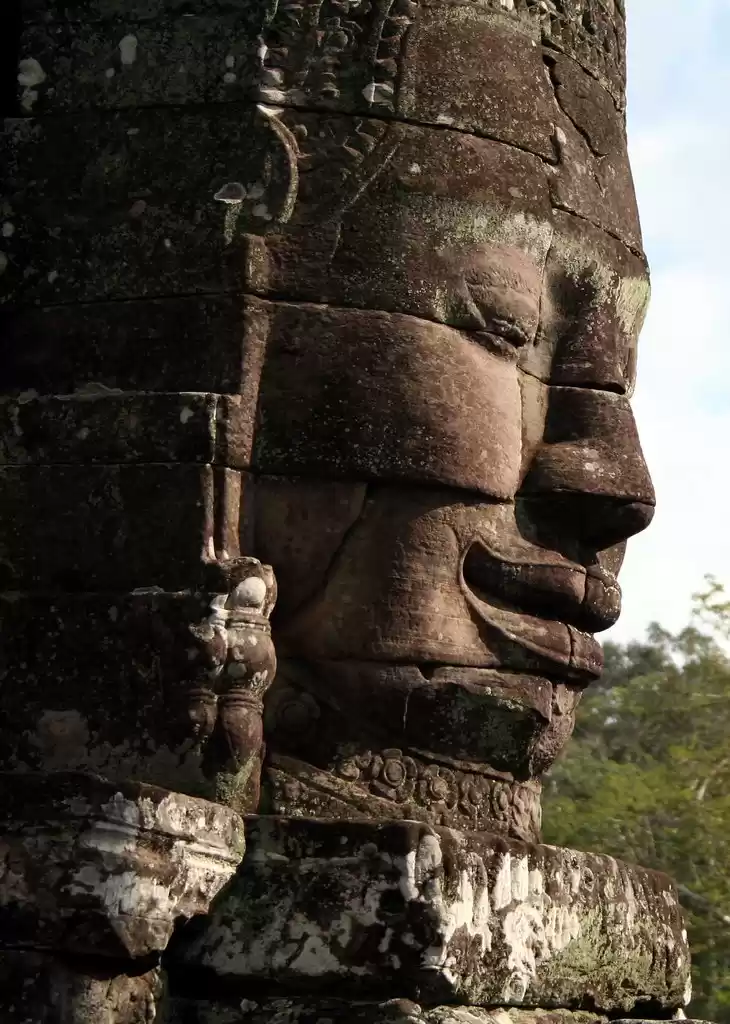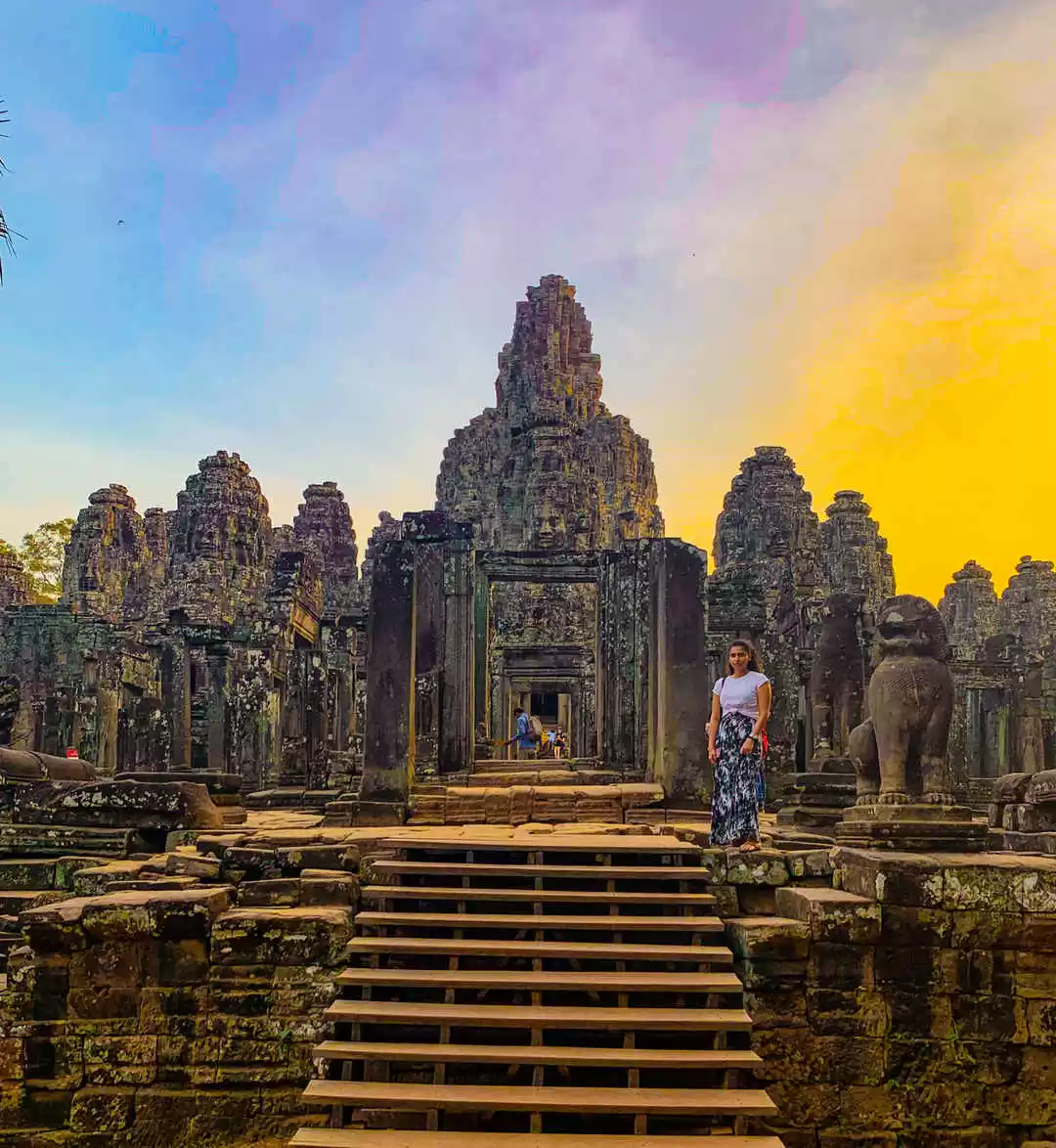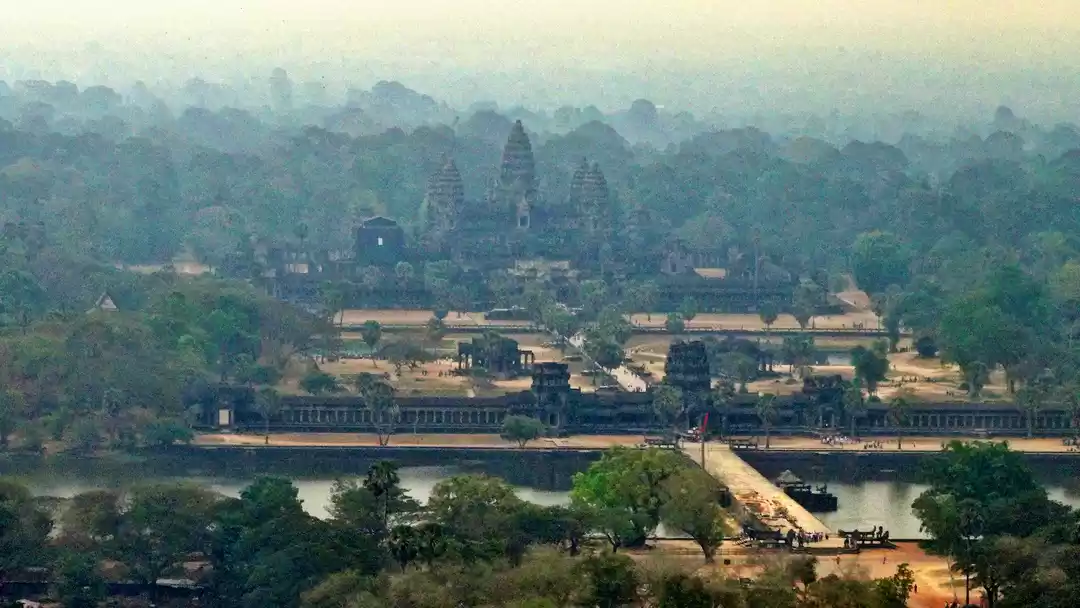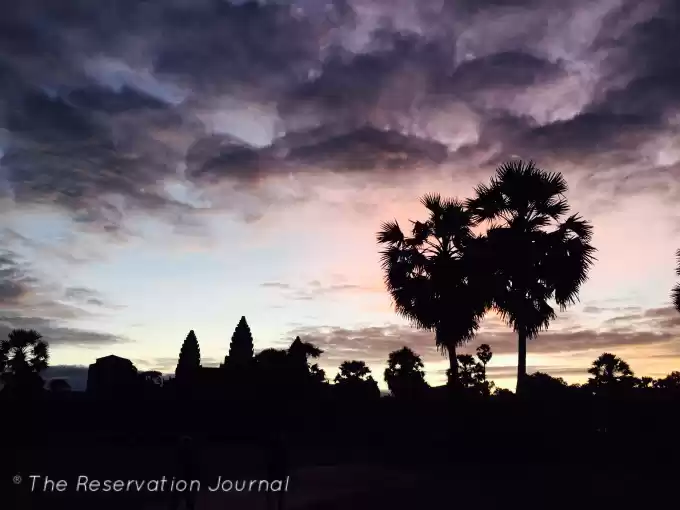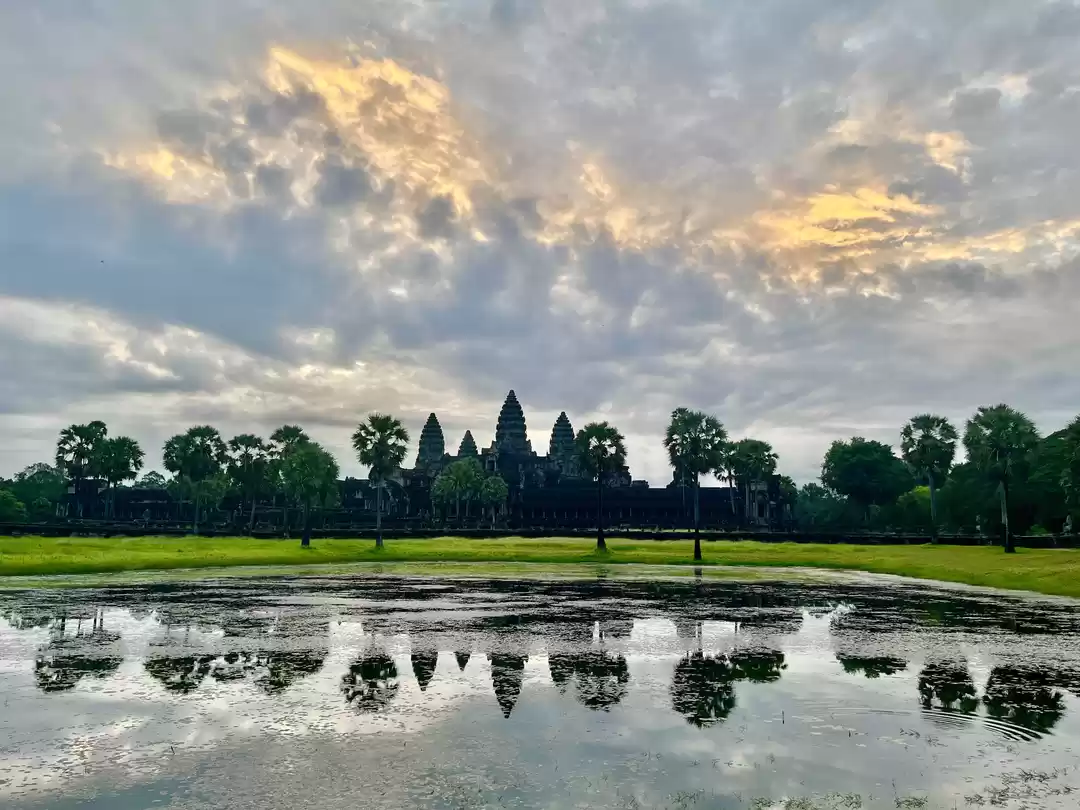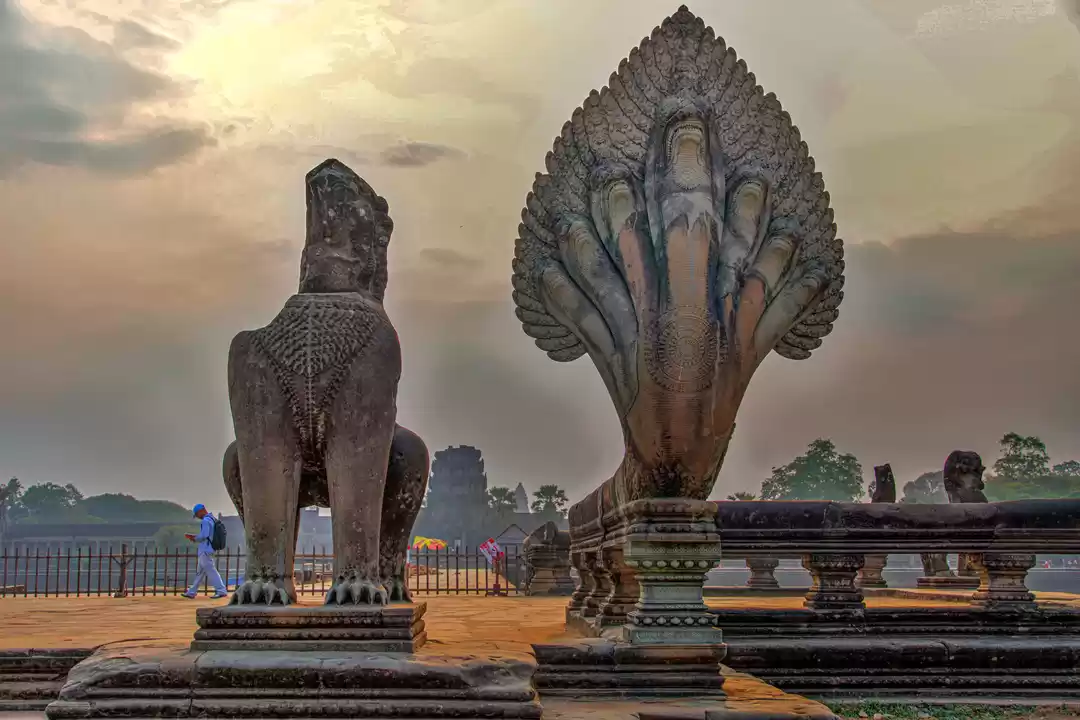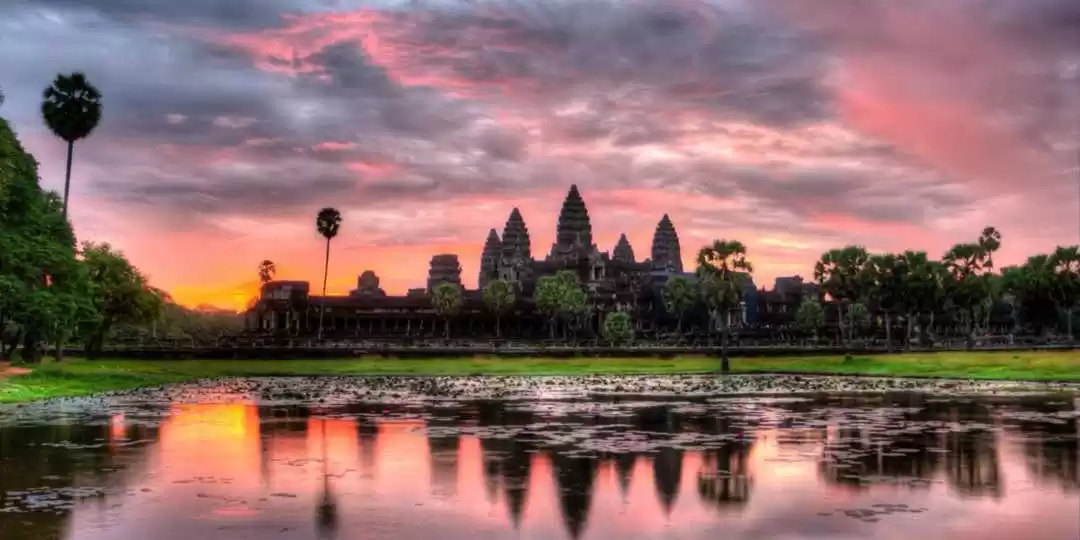
Small Tour and Sunrise (Pick up from the hotel’s lobby at 4:45 am)
Stop 1: (Visiting Angkor Wat) is a temple complex in Cambodia and one of the largest religious monuments in the world, on a site measuring 162.6 hectares. Originally constructed as a Hindu temple dedicated to the god Vishnu for the Khmer Empire, it was gradually transformed into a Buddhist temple towards the end of the 12th century.
Stop 2: Angkor Thom, which means 'Big Angkor', is one of the largest sites in the Angkor Archaeological Park. This huge walled city with a moat was the last great capital of the Angkorian Empire. When Jayavarman VII defeated the Cham invaders in 1181, and recaptured the Angkorian capital, he instituted a massive building program throughout the empire.
Stop 3: Bayon Temple, at the heart of Angkor Thom is the 12th-century Bayon, the mesmerising, if slightly mind-bending, state temple of Jayavarman VII. It epitomises the creative genius and inflated ego of Cambodia’s most celebrated king. Its 54 Gothic towers are decorated with 216 gargantuan smiling faces of Avalokiteshvara, and it is adorned with 1.2km of extraordinary bas-reliefs incorporating more than 11,000 figures.
Stop 4: (Visit Baphuon Temple) which is a temple at Angkor, Cambodia. It is located in Angkor Thom, northwest of the Bayon. Built in the mid-11th century, it is a three-tiered temple mountain built as the state temple of Udayadityavarman II dedicated to the Hindu God Shiva. After We walking around 200 meters long to see The Terrace of Elephant, Terrace of Leper King and Royal Palace.
Stop 5: (Ta Prohm) is the modern name of the temple at Angkor, Siem Reap Province, Cambodia, built in the Bayon style largely in the late 12th and early 13th centuries and originally called Rajavihara. As we known this temple: the photogenic and atmospheric combination of trees growing out of the ruins and the jungle surroundings have made it one of Angkor's most popular and also in The Thumb Rider Movie.
Day 2 Big Tour and Sunset at the Lake (Tour start at 8:30 am ).
Stop 1: (Preah Khan) is a temple at Angkor, Cambodia, built in the 12th century for King Jayavarman VII to honor his father. It is located northeast of Angkor Thom and just west of the Jayatataka baray, with which it was associated. It was the centre of a substantial organisation, with almost 100,000 officials and servants.
Stop 2: (Neak Pean) is an artificial island with a Buddhist temple on a circular island in Jayatataka Baray, which was associated with Preah Khan temple, built during the reign of King Jayavarman VII built in 12 century. It is the "Mebon" of the Preah Khan baray.
Stop 3: (Ta Som) is a small temple at Angkor, Cambodia, built at the end of the 12th century for King Jayavarman VII. It is located north east of Angkor Thom and just east of Neak Pean. The King dedicated the temple to his father Dharanindravarman II who was King of the Khmer Empire from 1150 to 1160.
Stop 4: (Banteay Kdei) is a massive Buddhist monastery from the latter part of the 12th century, is surrounded by four concentric walls. Each of its four entrances is decorated with garudas, which hold aloft one of Jayavarman VII’s favourite themes: the four faces of Avalokiteshvara. East of Banteay Kdei is a vast pool of water, Sra Srang, measuring 800m by 400m, reserved as a bathing pool for the king and his consorts.
Stop 5: (Pre Rup Temple) is a Hindu temple at Angkor, Cambodia, built as the state temple of Khmer king Rajendravarman and dedicated in 961 or early 962. It is a temple mountain of combined brick, laterite and sandstone construction.
The Last Stop: Visit the floating villages at Tonlé Sap Lake have become something of an interest for tourists visiting Siem Reap. The fascination with people who live in floating houses, travel to floating schools and eat at floating restaurants is quite an attraction for the many visitors that come to Cambodia. As well as the floating villages, there are also stilted villages along the banks of Tonle Sap Lake, where houses and buildings rest on tall, thin stilts that keep the occupants dry during the wet season, with giant ladders to reach the lower levels during the dry season.













Day 2 Big Tour and Sunset at the Lake (Tour start at 8:30 am ).
Stop 1: (Preah Khan) is a temple at Angkor, Cambodia, built in the 12th century for King Jayavarman VII to honor his father. It is located northeast of Angkor Thom and just west of the Jayatataka baray, with which it was associated. It was the centre of a substantial organisation, with almost 100,000 officials and servants.
Stop 2: (Neak Pean) is an artificial island with a Buddhist temple on a circular island in Jayatataka Baray, which was associated with Preah Khan temple, built during the reign of King Jayavarman VII built in 12 century. It is the "Mebon" of the Preah Khan baray.
Stop 3: (Ta Som) is a small temple at Angkor, Cambodia, built at the end of the 12th century for King Jayavarman VII. It is located north east of Angkor Thom and just east of Neak Pean. The King dedicated the temple to his father Dharanindravarman II who was King of the Khmer Empire from 1150 to 1160.
Stop 4: (Banteay Kdei) is a massive Buddhist monastery from the latter part of the 12th century, is surrounded by four concentric walls. Each of its four entrances is decorated with garudas, which hold aloft one of Jayavarman VII’s favourite themes: the four faces of Avalokiteshvara. East of Banteay Kdei is a vast pool of water, Sra Srang, measuring 800m by 400m, reserved as a bathing pool for the king and his consorts.
Stop 5: (Pre Rup Temple) is a Hindu temple at Angkor, Cambodia, built as the state temple of Khmer king Rajendravarman and dedicated in 961 or early 962. It is a temple mountain of combined brick, laterite and sandstone construction.
The Last Stop: Visit the floating villages at Tonlé Sap Lake have become something of an interest for tourists visiting Siem Reap. The fascination with people who live in floating houses, travel to floating schools and eat at floating restaurants is quite an attraction for the many visitors that come to Cambodia. As well as the floating villages, there are also stilted villages along the banks of Tonle Sap Lake, where houses and buildings rest on tall, thin stilts that keep the occupants dry during the wet season, with giant ladders to reach the lower levels during the dry season.


